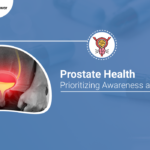Woman holding her stomach on her bed due to a UTI or hyperactive bladder pain. Urinary tract discomfort is experienced by two-thirds of women. If you fall into this category, you might be unsure whether a urinary tract infection or an overactive bladder is to blame.
Strong, frequent urination urges are a feature of overactive bladder and urinary tract infections. Because of this, determining whether your symptoms are due to a UTI, or an overactive bladder can be challenging. According to research, many women with OAB are frequently misdiagnosed as having UTIs, leading to ineffective treatment and overuse of unnecessary antibiotics.
UTI and hyperactive bladder are very distinct illnesses despite sharing certain symptoms. The term “overactive bladder” refers to a condition when the bladder muscles contract too much. While it can infrequently infect the kidneys, a UTI, in contrast, is typically a bacterial infection of the bladder.
Table of Contents
What connections exist between a UTI and an overactive bladder?
- Two medical diseases that induce discomfort in the urinary tract are UTI and an overactive bladder.
- Strong, frequent urination urges are a feature of both UTI and hyperactive bladder.
- Both disorders have an impact on the bladder.
- Urine sample analysis in the lab can be used to diagnose both UTI and overactive bladder.
- They can be treated with drugs.
How can you determine the difference between an Overactive bladder and a UTI right now? You should be aware of the following symptoms, causes, and remedies.

UTI Vs. Overactive Bladder Signs and Symptoms
A UTI will occur in about half of all women at some point in their life. However, only 16% of women experience overactive bladder. It can be useful to be aware of the most typical symptoms of either if you think you have a UTI or an overactive bladder.
Symptoms of UTI
Any or all the following symptoms could occur if you have a bladder infection:
- A constant, pressing urge to urinate
- Burning or discomfort when voiding
- despite a strong urge to urinate, only passing a small volume of urine
- urine that is red or hazy
- pains or pressure in the abdomen
These symptoms could occur if your kidneys are infected:
- Fever
- nausea and diarrhea
- back discomfort in the side or lower back
Symptoms of an Overactive Bladder
- a constant, pressing urge to urinate
- urinating at least eight times per 24 hours
- leakage of pee following an intense urge to urinate
- getting out of bed to use the potty in the middle of the night.
Three Important Distinctions Between UTI and Overactive Bladder Symptoms
Timing: While the overactive bladder is a chronic, persistent problem, UTI typically begins suddenly.
Despite being uncomfortable, an overactive bladder does not make urinating painful.
Blood in the Urine: Bloody or murky urine, which may indicate a UTI, is not caused by an overactive bladder.
Causes and Risk Factors of Overactive Bladder or UTI
Although UTI and overactive bladder affect the same area of the body, they have quite different causes and risk factors. The female urethra, the tube that connects to the bladder to evacuate pee from the body, is longer and is more vulnerable in women’s bodies than the male urethras. Because a woman’s urethra is relatively short, it doesn’t take much distance for bacteria to infect someone. Additionally, because of the female urethra’s proximity to the rectum, it is simple for bacteria from the rectum and skin to enter the urinary system.
In contrast to UTI, an overactive bladder is brought on by a totally distinct mechanism. In a typical state, when the bladder is full of urine, nerve impulses alert the brain to the situation. These impulses are sent to your brain, which causes the muscles in the bladder wall to contract and urge pee out. The bladder wall becomes hyperactive and contracts excessively frequently and violently when it has an overactive bladder. Even when the bladder isn’t completely full, this can occur.
UTI Causes and Risk Factors
- Previous UTIs
- Sexual activity
- A new sexual partner
- Use of spermicide-containing contraceptives
- Pregnancy
- Menopause
- Diabetes
- Increasing age
- Kidney stones
- Ignoring the urge to void
- Improper hygiene
Overactive Bladder Causes and Risk Factors
- Changes in hormones during menopause
- Diabetes
- Stroke
- Multiple sclerosis
- Bladder tumors or stones
- Certain medications
- Consuming large amounts of caffeine or alcohol
- Age-related changes in cognitive function
Diagnosis and Treatment
Both UTI and overactive bladder are diagnosed and treated differently since they have different underlying causes. A quick lab test that checks for bacteria in the urine can identify UTIs. Overactive bladder diagnosis requires several steps. Your doctor may request a few tests in addition to a physical examination, such as x-rays, ultrasounds, and tests to determine whether the bladder is leaking urine.
Is it more common to have an overactive bladder after a UTI, or vice versa? According to one study, 11% of women are susceptible to both. However, it’s unclear if an OAB can cause a UTI or vice versa.
UTI Treatment
UTI treatment is focused and brief. Your doctor will prescribe a course of antibiotics if lab tests reveal you have a urinary tract infection. Your doctor may also suggest specific over-the-counter painkillers.
Treating an Overactive Bladder
Since chronic overactive bladder requires a multifaceted strategy for therapy, some examples include:
- Nutrition and exercise
- Loss of weight, if indicated
- limiting or avoiding alcohol and caffeine
- If you smoke, you should stop.
- Kegel exercises to bolster the muscles of the pelvic floor
- avoiding harsh soaps and bubble baths
- managing chronic conditions like diabetes that may have symptoms.
- Planning bathroom visits can help you retrain your bladder.
Conclusion
Two medical diseases that induce discomfort in the urinary tract are UTI and an overactive bladder. Overactive bladder is a medical disorder that develops when the bladder muscles contract excessively, whereas UTI is a medical condition that develops when bacteria infect the kidneys and bladder. So, the main distinction between a UTI and an overactive bladder is this.
Make an appointment with Dr. Dushyant Panwar if you have burning, pain, or frequency in the urinary system. Dr. Dushyant Panwar is one of the most well-known urologists in Ahmedabad, who is noted for his top-notch care.





